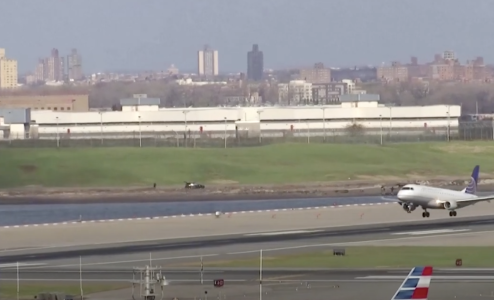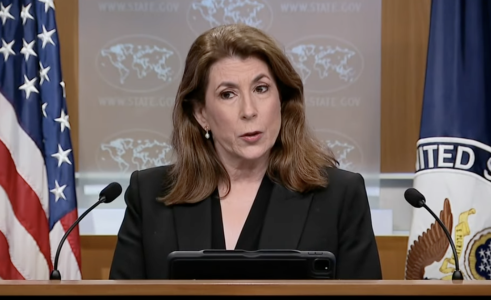Is your next vacation on the danger list? See which 21 countries Americans are now being told to avoid
- Replies 0
Dreaming of a sun-soaked getaway or an adventure off the beaten path?
Before you dust off your passport and start packing your bags, you might want to check if your dream destination has landed on the USA’s “danger list.”
The US government has just updated its travel advisories, and 21 countries are now flagged with a stern “reconsider travel” warning.
If you’re a senior and planning a trip, this is essential reading—because nothing ruins a vacation faster than finding yourself in a sticky situation far from home.
Why the Warnings?
Every year, the US State Department reviews global conditions and updates its Travel Advisory List.
These advisories aren’t just bureaucratic red tape—they’re based on real-time assessments of crime, political instability, terrorism, health risks, and the ability of the US Embassy to help you if things go sideways.

The warnings range from Level 1 (“exercise normal precautions”) to Level 4 (“do not travel”). Level 3, the “reconsider travel” category, is where things start to get serious.
The latest update came last May 27 as Venezuela was added to the “do not travel” list, with the US Embassy in Caracas urging Americans to avoid the country and its borders with Colombia, Brazil, and Guyana due to political unrest and high crime rates.
But Venezuela isn’t alone—there are now 21 countries where the US government strongly recommends you think twice before booking that flight.
Related story: You won’t believe how this 79-year-old visited every country in the world—and what she learned along the way
The 21 Countries on the “Reconsider Travel” List
Here’s the current roll call of countries where Americans are being told to reconsider travel due to serious safety and security risks:
- Guyana
- Trinidad and Tobago
- Papua New Guinea
- Burundi
- Uganda
- Bangladesh
- Colombia
- Guinea-Bissau
- Niger
- Chad
- Pakistan
- Guatemala
- Mozambique
- Nicaragua
- Honduras
- Macau
- Egypt
- New Caledonia
- Nigeria
- Mauritania
- Ethiopia

What’s Behind the Warnings?
Each country on this list has its own set of challenges. Some, like Trinidad and Tobago, are grappling with high rates of violent crime and even kidnapping.
Others, such as Egypt and Bangladesh, face ongoing threats from terrorism. In places like Nigeria and Mozambique, political instability and sporadic violence can make travel unpredictable and dangerous.
Even popular tourist spots aren’t immune. Egypt, for example, is a bucket-list destination for many, but the US government warns of terrorism and “limited embassy assistance for dual national US-Egyptian citizens who are arrested or detained.”
In Colombia, while many areas are safe and welcoming, certain regions are plagued by crime and unrest.
Also read: Before you pack your bags: 7 essential checks for travelers headed south
How Are These Warnings Decided?
The State Department doesn’t take these decisions lightly. Level 3 advisories are reviewed at least every six months, and the list can change quickly as situations evolve. Meanwhile, Levels 1 to 2 are revisited every 12 months.
The government considers everything from local crime statistics and health risks (think outbreaks of diseases like Zika or Ebola) to the ability of the US Embassy to help citizens in an emergency.
What Does a Level 3 Warning Mean for You?
A Level 3 “reconsider travel” warning isn’t a flat-out ban, but it’s a recommendation not to travel to countries under Level 3 “due to serious risks to safety and security.”
Source: CBS Miami / Youtube.
If you do decide to go, you’ll want to take extra precautions:
- Register your trip with the US Embassy through the Smart Traveler Enrollment Program (STEP).
- Make sure your travel insurance covers medical emergencies and evacuation.
- Stay updated on local news and government alerts.
- Have a backup plan in case you need to leave quickly.
What About Level 4: “Do Not Travel” Countries?
Level 4 is the government’s most serious warning. These are places where the risks are so high that Americans are advised not to travel under any circumstances.
Currently, this includes countries like North Korea, Russia, Ukraine, and now Venezuela. If you have family or business ties in these regions, it’s especially important to stay informed and cautious.
You can check out the full information of the US Department of State's Travel Advisory here.
Read next: Your American passport just got more powerful—See where it takes you for free!

Have you ever had to change your travel plans because of a government warning? Do you have tips for staying safe abroad, or stories of close calls you’d like to share? We’d love to hear from you!
Before you dust off your passport and start packing your bags, you might want to check if your dream destination has landed on the USA’s “danger list.”
The US government has just updated its travel advisories, and 21 countries are now flagged with a stern “reconsider travel” warning.
If you’re a senior and planning a trip, this is essential reading—because nothing ruins a vacation faster than finding yourself in a sticky situation far from home.
Why the Warnings?
Every year, the US State Department reviews global conditions and updates its Travel Advisory List.
These advisories aren’t just bureaucratic red tape—they’re based on real-time assessments of crime, political instability, terrorism, health risks, and the ability of the US Embassy to help you if things go sideways.

The US government is warning its citizens to reconsider travel to 21 countries due to serious risks to safety, security, crime, and political unrest. Image source: Reuters / Youtube.
The warnings range from Level 1 (“exercise normal precautions”) to Level 4 (“do not travel”). Level 3, the “reconsider travel” category, is where things start to get serious.
The latest update came last May 27 as Venezuela was added to the “do not travel” list, with the US Embassy in Caracas urging Americans to avoid the country and its borders with Colombia, Brazil, and Guyana due to political unrest and high crime rates.
But Venezuela isn’t alone—there are now 21 countries where the US government strongly recommends you think twice before booking that flight.
Related story: You won’t believe how this 79-year-old visited every country in the world—and what she learned along the way
The 21 Countries on the “Reconsider Travel” List
Here’s the current roll call of countries where Americans are being told to reconsider travel due to serious safety and security risks:
- Guyana
- Trinidad and Tobago
- Papua New Guinea
- Burundi
- Uganda
- Bangladesh
- Colombia
- Guinea-Bissau
- Niger
- Chad
- Pakistan
- Guatemala
- Mozambique
- Nicaragua
- Honduras
- Macau
- Egypt
- New Caledonia
- Nigeria
- Mauritania
- Ethiopia

Venezuela has recently been added to the “do not travel” list, with the US Embassy urging Americans to avoid the country and its borders with Colombia, Brazil, and Guyana for any reason. Image source: CBS Miami / Youtube.
What’s Behind the Warnings?
Each country on this list has its own set of challenges. Some, like Trinidad and Tobago, are grappling with high rates of violent crime and even kidnapping.
Others, such as Egypt and Bangladesh, face ongoing threats from terrorism. In places like Nigeria and Mozambique, political instability and sporadic violence can make travel unpredictable and dangerous.
Even popular tourist spots aren’t immune. Egypt, for example, is a bucket-list destination for many, but the US government warns of terrorism and “limited embassy assistance for dual national US-Egyptian citizens who are arrested or detained.”
In Colombia, while many areas are safe and welcoming, certain regions are plagued by crime and unrest.
Also read: Before you pack your bags: 7 essential checks for travelers headed south
How Are These Warnings Decided?
The State Department doesn’t take these decisions lightly. Level 3 advisories are reviewed at least every six months, and the list can change quickly as situations evolve. Meanwhile, Levels 1 to 2 are revisited every 12 months.
The government considers everything from local crime statistics and health risks (think outbreaks of diseases like Zika or Ebola) to the ability of the US Embassy to help citizens in an emergency.
What Does a Level 3 Warning Mean for You?
A Level 3 “reconsider travel” warning isn’t a flat-out ban, but it’s a recommendation not to travel to countries under Level 3 “due to serious risks to safety and security.”
Source: CBS Miami / Youtube.
If you do decide to go, you’ll want to take extra precautions:
- Register your trip with the US Embassy through the Smart Traveler Enrollment Program (STEP).
- Make sure your travel insurance covers medical emergencies and evacuation.
- Stay updated on local news and government alerts.
- Have a backup plan in case you need to leave quickly.
What About Level 4: “Do Not Travel” Countries?
Level 4 is the government’s most serious warning. These are places where the risks are so high that Americans are advised not to travel under any circumstances.
Currently, this includes countries like North Korea, Russia, Ukraine, and now Venezuela. If you have family or business ties in these regions, it’s especially important to stay informed and cautious.
You can check out the full information of the US Department of State's Travel Advisory here.
Read next: Your American passport just got more powerful—See where it takes you for free!
Key Takeaways
- The US government is warning its citizens to reconsider travel to 21 countries due to serious risks to safety, security, crime, and political unrest.
- Venezuela has recently been added to the “do not travel” list, with the US Embassy urging Americans to avoid the country and its borders with Colombia, Brazil, and Guyana for any reason.
- Countries on the “reconsider travel” list include popular tourist destinations such as Trinidad and Tobago, Egypt, Papua New Guinea, and Colombia, mainly due to concerns over crime, kidnapping, and terrorism.
- The US State Department regularly reviews and updates these travel advisories, assigning countries a risk level from one (exercise normal precautions) to four (do not travel).
Have you ever had to change your travel plans because of a government warning? Do you have tips for staying safe abroad, or stories of close calls you’d like to share? We’d love to hear from you!






